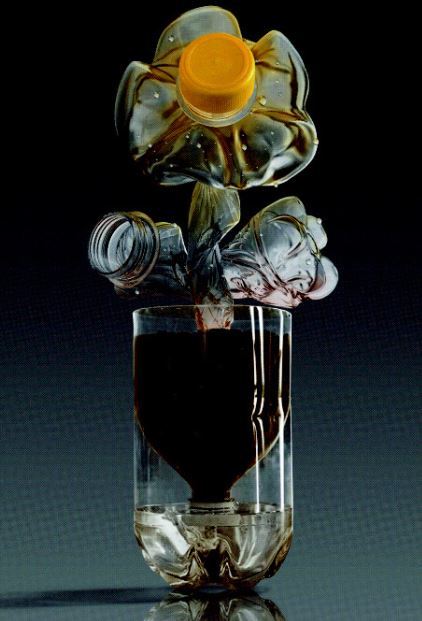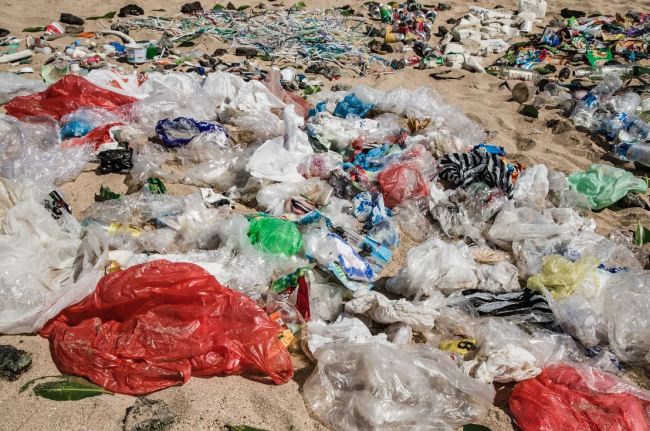[Weekender] Plastics may be on your plate
Chemical components designed to make human lives easy is killing ecosystem, but not many know how
By Song Su-hyunPublished : June 8, 2018 - 16:31
A war has begun worldwide on plastics.
For decades, polymers have been used to make human lives easy and more hygienic, but with single-use plastic items being blamed for killing species on the ocean and threatening ecosystems, global initiatives have been launched since last year by the United Nations to curb their use.
But South Korea, one of the biggest producers and consumers of plastics in the world, has taken a little interest in curbing plastic pollution.
Leaders have been pointing out a lack of public awareness of the impact of plastics on ecosystems, and also on human lives.
“‘Korea is the No. 1 plastic consumer, but public awareness of recycling remains low,” said Korean Prime Minister Lee Nak-yeon in his speech marking the World Environment Day on Tuesday.
“The amount of plastic waste surged 45.6 percent in the country over the past five years, but less than half of it were recycled,” he said.
And how bad can plastic pollution be?
For decades, polymers have been used to make human lives easy and more hygienic, but with single-use plastic items being blamed for killing species on the ocean and threatening ecosystems, global initiatives have been launched since last year by the United Nations to curb their use.
But South Korea, one of the biggest producers and consumers of plastics in the world, has taken a little interest in curbing plastic pollution.
Leaders have been pointing out a lack of public awareness of the impact of plastics on ecosystems, and also on human lives.
“‘Korea is the No. 1 plastic consumer, but public awareness of recycling remains low,” said Korean Prime Minister Lee Nak-yeon in his speech marking the World Environment Day on Tuesday.
“The amount of plastic waste surged 45.6 percent in the country over the past five years, but less than half of it were recycled,” he said.
And how bad can plastic pollution be?

Unlike metals, plastics do not rust or corrode. Most plastics do not biodegrade, but they slowly break down into tiny fragments known as microplastics, taking thousands of years to decompose and contaminating soil and water.
The fragmentation of large plastic items into microplastics is common on land such as beaches because of high ultraviolet irradiation and abrasion by waves, while the degradation process is much slower in the ocean due to cooler temperatures and reduced UV exposure.
Most people never think of eating plastic, but it could be happening right now on our dinner table, experts say. Since most plastics do not evaporates nor quickly decompose, they are found in seafood harvested near the Korean peninsula.
Last year, the Korea Institute of Ocean Science and Technology detected four types of microplastics in oysters, mussels, short-necked clams and scallops grown in the waters off the southern and eastern coast.
The institute also revealed that 135 out of 139 marine invertebrates in the Korean waters have digested microplastics, with eight kinds of plastic fragments on average were found in each.

“Those microplastics are known to directly deter the growth of marine life, and would gradually impact human health at the very top of the food chain,” the institute noted.
According to the UN Environment, more than 8 million tons of plastics end up in the oceans each year, wreaking havoc on marine wildlife, fisheries and tourism, and causing at least $8 billion in damage to marine ecosystems.
Up to 80 percent of all litter in our oceans is made of plastics.
How harmful are they to the environment and humans?
We still don’t have data on the size of their impact on human health, if people unknowingly ingest plastic fragments or other substances as they have seafood made of fisheries that digested microplastics.
However, in theory, plastic litter causes a plethora of problems the environment and health of living things.
Plastic bags, for example, can block waterways and exacerbate natural disasters. By clogging sewers and providing breeding grounds for mosquitoes and pests, plastic bags can increase the transmission of vector-borne diseases like malaria, according to the UN report.
“High concentrations of plastic materials, particularly plastic bags, have been found blocking the airways and stomachs of hundreds of species,” it said. “Plastic bags are often ingested by turtles and dolphins who mistake them for food. There is evidence that the toxic chemicals added during the manufacture of plastic transfer to animal tissue, eventually entering the human food chain.”
Styrofoam products contain carcinogenic chemicals like styrene and benzene, and are highly toxic if ingested, damaging the nervous system, lungs and reproductive organs.
The toxins in Styrofoam containers can leach into food and drinks, the report noted.
Citizens should actively engage in recycling, claimed Hong Soo-yeol, head of a local research center for resource circulation at a seminar held in Seoul on Monday.
“To recycle plastics properly, citizens must actively participate in the activities,” Hong said. “Minute efforts are needed to be made by individuals, for example, taking off any plastic tape on objects you throw away and cleaning them beforehand.”
By Song Su-hyun (song@heraldcorp.com)







![[KH Explains] How should Korea adjust its trade defenses against Chinese EVs?](http://res.heraldm.com/phpwas/restmb_idxmake.php?idx=644&simg=/content/image/2024/04/15/20240415050562_0.jpg&u=20240415144419)










![[Today’s K-pop] Stray Kids to return soon: report](http://res.heraldm.com/phpwas/restmb_idxmake.php?idx=642&simg=/content/image/2024/04/16/20240416050713_0.jpg&u=)